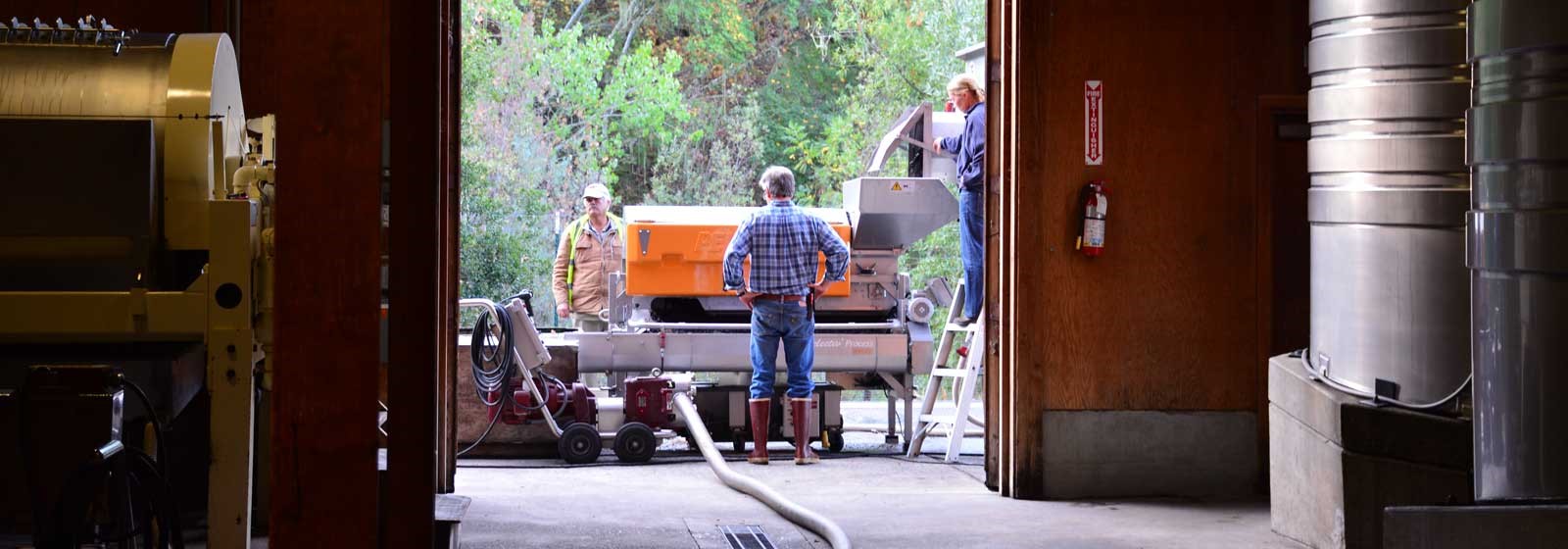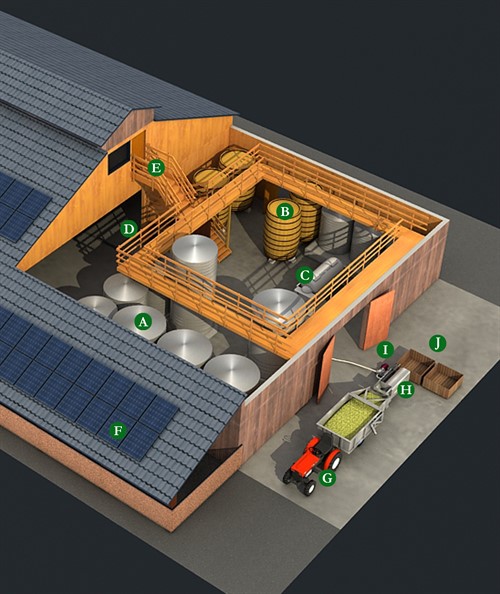The heart of any winery is its cellar. This is where grapes become wine. Fermentation, aging, bottling, storage and the occasional tour all take place here in our winery in what is actually a compact area. Even after over four decades, our cellar continues to be a very efficient and practical layout for Winemaker Parke Hafner and his team.
New, advanced equipment may make the winemaker’s job easier, but it is hard work, attention to detail and commitment to quality that assure the best wine. Some of our cellar equipment (oak and stainless steel tanks, our German-made grape press and Parke’s handmade work bench) has been in service since the early 1980s. While many wineries utilize new software to track movement of wines, we are small enough to do this the old fashioned way, on handwritten cellar cards, which give us a deep familiarity with each vintage. The goal is always to make wines that age well and pair well with food, being consistent in style year-to-year, focusing on the Old World style of winemaking. Learn about our winemaking style here.
Harvest is the most exciting time in the cellar. Doors 20 feet tall open onto the south pad where the tractors bring gondolas full of grapes straight from the vineyard. Here is a bird's eye view of the cellar during Chardonnay Harvest.
A. Eleven stainless steel tanks are used for fermentation of red wines and some lots of Chardonnay, plus blending and preparation for bottling.
B. Four French oak tanks purchased in the early 1980’s provide additional storage, mainly for red wines.
C. Our German wine press is in operation for about two weeks a year, spread out over 2½ months during Harvest.
D. Parke’s work bench, built by the winemaker himself, holds supplies and tools and is the location of many quick cellar tastings.
E. Stairs lead to the second floor where Parke’s Wine Lab is, along with offices for the rest of the winery crew. This was originally where Parke and Sarah lived in the early 1980s keeping a close eye on the business. Kate’s crib was pushed next to it so that when she woke up, she could look down to see them working and they could see her. They eventually built a house just up the road on the property so are still close to the winery every day.
F. Solar panels provide 40% of our energy.
G. Right from the vineyard, a tractor delivers a gondola full of Chardonnay grapes.
H. Our French fruit sorter separates the grapes from any leaves and stems.
I. The pump moves the grapes from the fruit sorter into the press (C).
J. These bins at the end of the fruit sorter (H) collect all the stems and leaves, which will be composted and added back to the vineyard soil.






